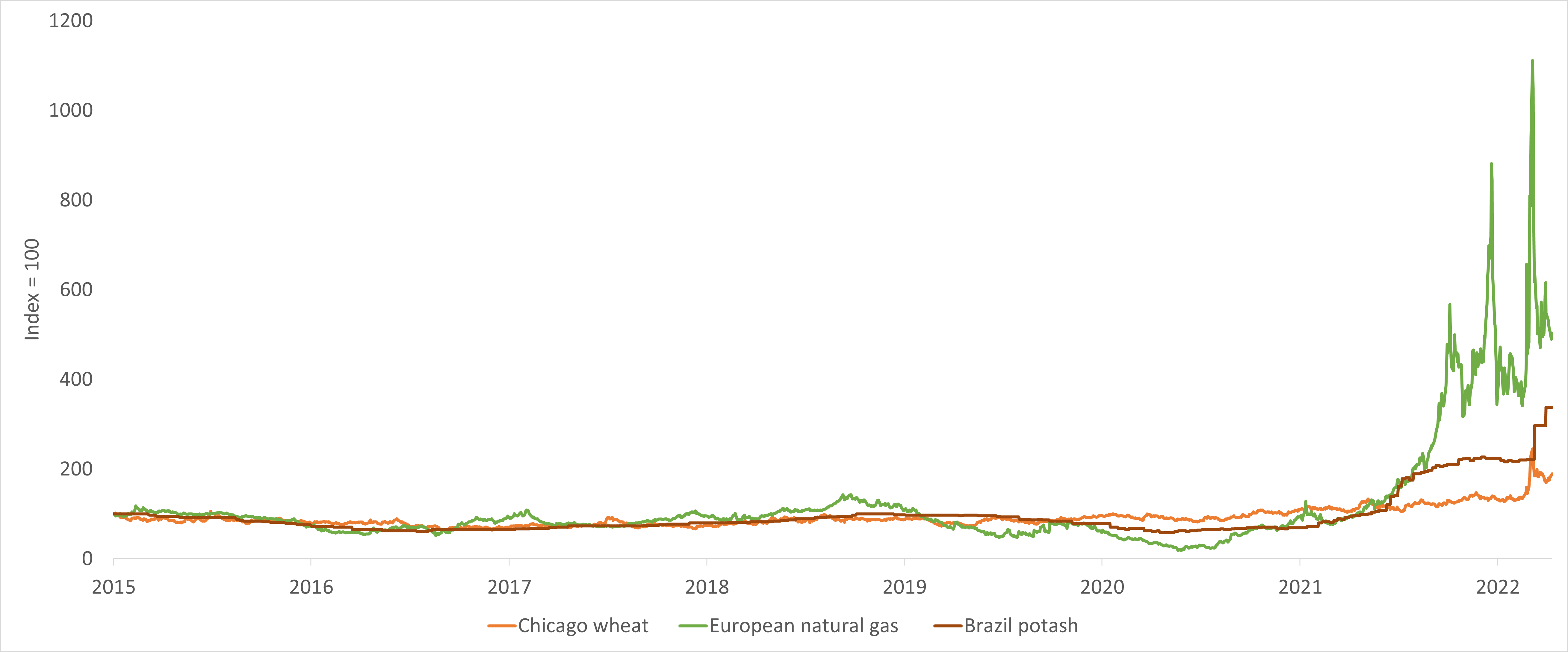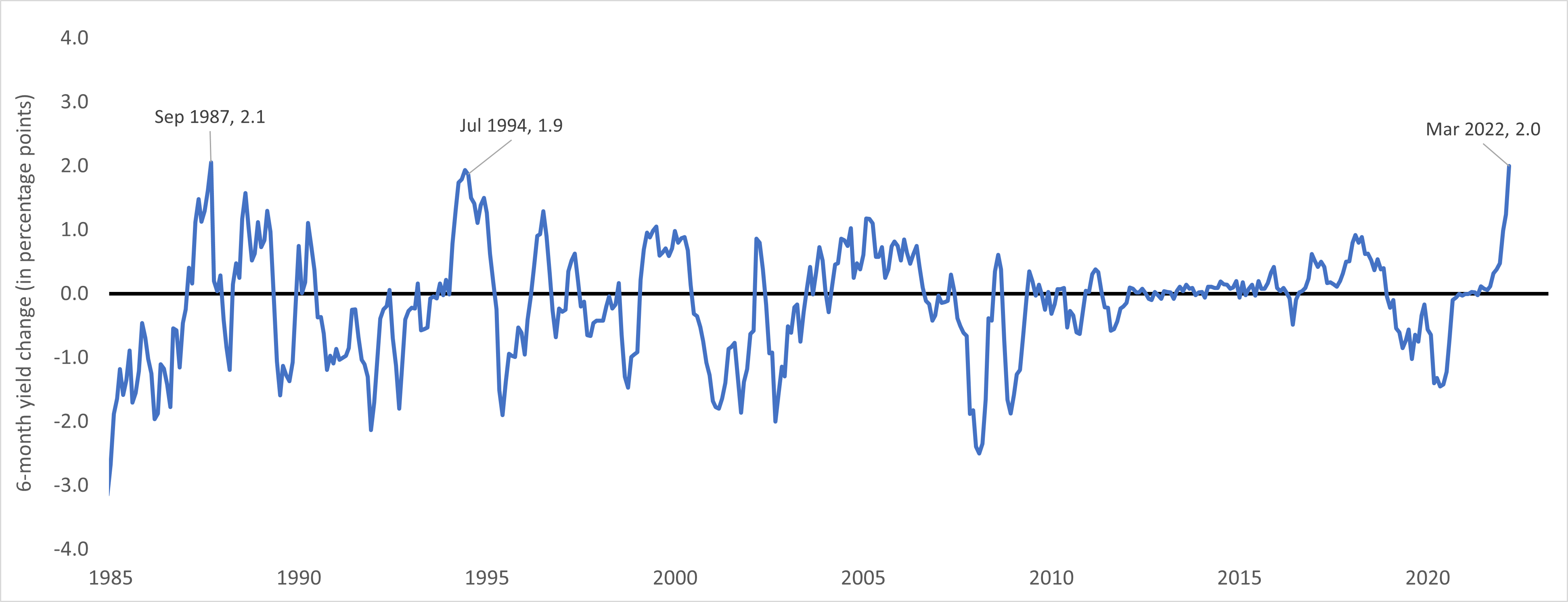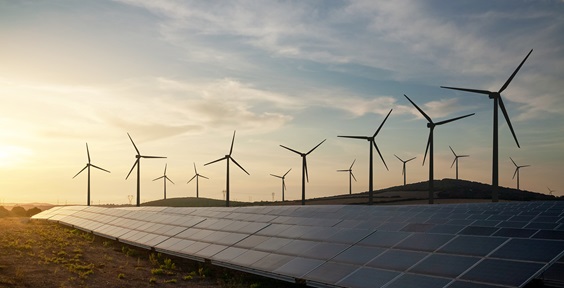In today’s volatile market, diversification may not be enough

Summary
The first part of 2022 has been a rocky period for investors, as the invasion of Ukraine came on top of an already volatile start to the year. The attack has unsettled already volatile markets, made inflation worse and accelerated a deglobalisation trend that has been apparent for some time. Investors may need a new toolkit, rather than relying on traditional approaches that previously helped in turbulent times.
Key takeaways
|
Volatility has dominated markets this year, fuelled by Russian armed forces’ invasion of Ukraine and hawkish central bank warnings about inflation risks. The resulting economic sanctions on Russia are also having global repercussions that are making the inflation problem worse. Countries are rethinking their energy and food supply chains, and they are reassessing the currencies used for essential transactions. Sanctions have also sped up the deglobalisation trend as production sites are relocated, organisations grow more vertical, and the allocation of labour and capital becomes less efficient.
As the global economy struggles to cope with these massive changes, investors should use the opportunity to reassess how they structure their portfolios. What has worked in the past for many – comprehensive diversification across and within asset classes – may not be sufficient. Rather, it may be time to actively adjust existing positions and add new approaches. These may include combining commodities with other real assets to help improve resiliency, or harvesting risk premia to add incremental returns.
As globalisation wanes, geofinance is becoming critical in how the world works
It’s no surprise that financial markets are becoming instrumental in geopolitical struggles and vice versa – a concept frequently referred to as “geofinance”. Consider how economic sanctions against Russia are having knock-on effects around the world:
- Russia’s central bank is limiting the use of its US dollar and euro reserves. This leads to the fundamental question of whether those currencies still make sense as reserve in a central bank’s balance sheet – at least in countries potentially exposed to sanctions. There are few alternatives at present, but we would expect an increased diversification of currency baskets over time and larger reserves of gold – an asset class we favour in the long term.
- Since it is now almost impossible to trade with Russia in US dollars, the greenback could again be challenged as the preferred global trading currency. We do not expect the US dollar to be replaced by any other currency in the coming years, but over time, more transactions will take place in what will also become trading currencies. As the US has, over decades, financed its deficit with international demand for dollars, this could lead – permanently – to higher inflation in the dollar through its devaluation and, consequently, less demand for US Treasuries by central banks. And the timing couldn’t be worse for the US Treasury, with the US debt-to-GDP ratio ballooning at around 133% at the end of 2021, up 25 percentage points since the onset of the Covid-19 crisis.1
- Prohibitions against doing business with Russian companies – which will lead to their eventual exclusion by major equity and fixed-income indices – could over time lead to a repricing of tail risks for countries not aligned with the West. This could become particularly problematic if we see another “cold war” between blocs of countries; in that case, large clusters of risks will likely emerge. Perhaps we will soon have to redefine global bonds and equities based on this new reality.
Get ready: inflation may be here to stay
With the globalisation trend faltering, “re-regionalisation” gaining traction and growing barriers to entry between trading blocs, capital and labour will be misallocated – particularly as production is repatriated to less efficient locations, inventories are expanded and labour costs increase. These inflationary trends would be serious enough on their own, but there are also other major inflationary shifts underway. Consider what is happening in the energy and agricultural supply chains.
The climate transition is contributing to an inflationary commodities super-cycle
When we look at the global economy, we see signs of a “super-cycle” in commodities – a massive shift in production and usage that is supported by global efforts to reduce carbon emissions. Consider that fossil-fuel investment (especially in shale gas and coal) has plunged over the last few years, while the transition to “green” energy has just begun in earnest. Green technology is dependent on a different set of commodities – just think about the copper used in electric vehicles. In addition, we must recognise that while renewable energy is less polluting, it is less “energy-dense” than its fossil-fuel or nuclear counterparts on a same-for-same basis. That means more energy sources will be needed to produce the same amount of energy.
Before the invasion of Ukraine, we were convinced that the energy transition alone would lead to some inflationary pressures. Since then, the conflict has been a catalyst for major changes that could push inflation up even more. Consider these examples:
- Germany is rethinking its long-term dependence on Russian gas.
- The EU is discussing a EUR 200 billion package of “NextGenerationEU” green bonds, favouring (among other areas) renewables and green energy.
- France and other countries are subsidising petrol prices, which indirectly supports demand etc.
- Above all, a full boycott of Russian gas imports – which we believe is increasingly likely – would worsen the inflationary gas price shock.
Shifts in the agricultural system are inflationary
In parallel, the drop in production of agricultural goods – especially Ukrainian wheat – has already led to rising food prices, and more increases are in store. This will be untenable for already exposed countries like Egypt, Nigeria or even Turkey, and we could even see a growing risk of civil unrest in certain parts of the world. Of course, those production cuts will be at least partly compensated for by production rises or substitutions elsewhere. But in the EU and other regions close to Russia, the fertilisers that help increase productivity are mainly produced thanks to Russian gas. A less-productive agricultural system therefore likely means higher food prices in the medium term – and related commodity prices have already risen significantly (see Exhibit 1).
Exhibit 1: in recent months, the price of gas, wheat and potash (used in fertiliser) has jumped
Price of Chicago wheat, European natural gas and Brazil potash (2015-2022)

Source: Bloomberg. Data as at 12 April 2022.
So the world is facing the real risk that there will be a further rise not only in inflation, but in inflation expectations. Similar environments in the past have led to a vicious inflationary cycle – something central banks want to avoid at all costs. It is therefore not surprising that the US Federal Reserve threatens to use the “big bazooka” – 50-basis-point hikes – to cool down the US economy. Meanwhile, the European Central Bank has clearly stated, despite the risk of an economic slowdown, that it would use a more hawkish approach, emphasising the focus on maintaining its credibility in the fight against inflation.
What should investors do?
Consider using the next bond-market correction to buy back positions
We think interest rates could rise even further than expected in the next month, especially in Europe. Meanwhile, we expect the US bond market to bounce back over the next 12 months, after many years of overvaluation (see Exhibit 2). This offers some perspective. While our Multi Asset expert group has moved from a strong overweight to an overall underweight in fixed income this year, we would certainly capture the next bond correction to start building back some positions.
Exhibit 2: powered by rising inflation, the recent jump in short-term Treasuries was among the highest in decades
Six-month change in 2-year US Treasury rates (1985-2022)

Source:Bloomberg. Data as at March 2022.
Keep a close eye on equity markets
The reaction of equity markets remains puzzling to us. Many ingredients are on hand for lower markets and yet retail investors don’t yet seem to have the same view:
- Valuations remain high.
- Rising wages and energy costs are eating slowly but surely into companies’ margins.
- There is tremendous uncertainty about production chains.
- The consumption pattern is a drag on growth.
- Central banks’ hawkishness is set to reduce “free cash”.
Could it be that investors are still pursuing a “buy-the-dip” strategy, which indeed worked well in past years? Or are we seeing primarily a reallocation from bonds to equities, as the latter offers a better inflation hedge, being a real asset?
From our Multi Asset perspective, volatility looks set to remain high, so before we move back to a positive stance, real rates will need to come down and valuations will need to adjust. Critically, we see early signs of earnings pressure. The Allianz Global Investors Systematic Strategies team uses artificial intelligence-powered software to analyse the wording in broker reports on companies around the world, and they have seen a notable downward trend in sentiment (see Exhibit 3).
Exhibit 3: broker research reports have grown increasingly negative about companies globally
AllianzGI's proprietary broker sentiment score by region (Jan-Apr 2022)

Source: Allianz Global Investors. Data at of April 2022.
The euro zone is the primary region we’re concerned about
In terms of regions, we are especially worried about the euro zone. In its benchmark index (the Euro Stoxx 50), there are no large technology companies that have the same pricing power as their US counterparts do. Moreover, Europe has fewer “oligopolistic” companies and a high dependency on energy. The UK offers much better protection thanks to its exposure to a barbell of defensive healthcare and energy.
Emerging markets, on the other hand, are more complex: commodity importers will continue to suffer, especially if the US dollar remains solid, while exporters will obviously profit. China has elections approaching, so we expect to see more fiscal and monetary support for its economy, in addition to more conciliatory tones towards trade with the US and a more moderate approach to regulation. However, China’s “zero-Covid” strategy could be severely tested by the new Omicron variant, turning it into a Damocles sword hanging over China’s recovery prospects.
Commodities can be helpful additions to portfolios
If equities as an asset class can be classified as “cautiously negative” and bonds may still not yet be an opportunity, what do we have left? Commodities, via direct or indirect investment, represent a great diversifier. The commodities super-cycle, the lack of supply and their overall ability to be an inflation hedge favour commodities as an asset class. The only real downside we see for now is that liquidity risks could provoke more volatility when key players – asset managers and intermediaries - exit the market. Combining commodities with other real assets (such as real estate, inflation-linked bonds, etc) may be able to help make portfolios more resilient while still allowing for exposure to equity markets.
Consider strategies that harvest risk premia or target modest absolute returns
This is an attractive environment for investors looking to take advantage of volatility premia. The spikes will continue to offer attractive entry points to profit from the spread implied over realised volatility, a strategy that has been successful in the long term. But such a strategy needs to be actively managed. A strategy that targets risk premia or seeks to moderate absolute return may suddenly start attracting investors’ attention, despite having so much difficulty during the booming years of equity and bonds. After all, in Europe at least, cash rates are still deeply in negative territory. In that environment, a steady 2%-3% nominal yield suddenly looks perfectly acceptable as a portfolio stabiliser.
Three specific opportunities
- At current spreads, US high yield start looking attractive especially if one does not expect a major recession in 2023.
- The concept of “Digital Darwinism” – amid a new “survival of the fittest” digital era – seems set to accelerate, putting certain tech and big data companies in high demand.
- The road to “net-zero” carbon emissions will continue to attract flows into sustainable investments in both liquid and private markets. This is especially true as European regulators enact MiFID II – a massive set of new financial regulations that seem likely to be copied by global regulators in one version or another.
As the West reassesses its relationship with Russia, inflationary pressures mount and central banks try to engineer a soft landing, investors will want to stay open to new ideas. Traditional diversification can be helpful during normal times, but the global economy has entered uncharted new territory. Investors will want to be flexible, nimble and active in the coming months.
1 Source: IMF. Data as at December 2021.
Diversification does not guarantee a profit or protect against losses.
Investing involves risk. The value of an investment and the income from it will fluctuate and investors may not get back the principal invested. Past performance is not indicative of future performance. This is a marketing communication. It is for informational purposes only. This document does not constitute investment advice or a recommendation to buy, sell or hold any security and shall not be deemed an offer to sell or a solicitation of an offer to buy any security.
The views and opinions expressed herein, which are subject to change without notice, are those of the issuer or its affiliated companies at the time of publication. Certain data used are derived from various sources believed to be reliable, but the accuracy or completeness of the data is not guaranteed and no liability is assumed for any direct or consequential losses arising from their use. The duplication, publication, extraction or transmission of the contents, irrespective of the form, is not permitted.
This material has not been reviewed by any regulatory authorities. In mainland China, it is for Qualified Domestic Institutional Investors scheme pursuant to applicable rules and regulations and is for information purpose only. This document does not constitute a public offer by virtue of Act Number 26.831 of the Argentine Republic and General Resolution No. 622/2013 of the NSC. This communication’s sole purpose is to inform and does not under any circumstance constitute promotion or publicity of Allianz Global Investors products and/or services in Colombia or to Colombian residents pursuant to part 4 of Decree 2555 of 2010. This communication does not in any way aim to directly or indirectly initiate the purchase of a product or the provision of a service offered by Allianz Global Investors. Via reception of his document, each resident in Colombia acknowledges and accepts to have contacted Allianz Global Investors via their own initiative and that the communication under no circumstances does not arise from any promotional or marketing activities carried out by Allianz Global Investors. Colombian residents accept that accessing any type of social network page of Allianz Global Investors is done under their own responsibility and initiative and are aware that they may access specific information on the products and services of Allianz Global Investors. This communication is strictly private and confidential and may not be reproduced. This communication does not constitute a public offer of securities in Colombia pursuant to the public offer regulation set forth in Decree 2555 of 2010. This communication and the information provided herein should not be considered a solicitation or an offer by Allianz Global Investors or its affiliates to provide any financial products in Brazil, Panama, Peru, and Uruguay. In Australia, this material is presented by Allianz Global Investors Asia Pacific Limited (“AllianzGI AP”) and is intended for the use of investment consultants and other institutional/professional investors only, and is not directed to the public or individual retail investors. AllianzGI AP is not licensed to provide financial services to retail clients in Australia. AllianzGI AP is exempt from the requirement to hold an Australian Foreign Financial Service License under the Corporations Act 2001 (Cth) pursuant to ASIC Class Order (CO 03/1103) with respect to the provision of financial services to wholesale clients only. AllianzGI AP is licensed and regulated by Hong Kong Securities and Futures Commission under Hong Kong laws, which differ from Australian laws.
This document is being distributed by the following Allianz Global Investors companies: Allianz Global Investors U.S. LLC, an investment adviser registered with the U.S. Securities and Exchange Commission; Allianz Global Investors Distributors LLC, distributor registered with FINRA, is affiliated with Allianz Global Investors U.S. LLC; Allianz Global Investors GmbH, an investment company in Germany, authorized by the Page 6 of 6 Internal German Bundesanstalt für Finanzdienstleistungsaufsicht (BaFin); Allianz Global Investors (Schweiz) AG; in HK, by Allianz Global Investors Asia Pacific Ltd., licensed by the Hong Kong Securities and Futures Commission; ; in Singapore, by Allianz Global Investors Singapore Ltd., regulated by the Monetary Authority of Singapore [Company Registration No. 199907169Z]; in Japan, by Allianz Global Investors Japan Co., Ltd., registered in Japan as a Financial Instruments Business Operator [Registered No. The Director of Kanto Local Finance Bureau (Financial Instruments Business Operator), No. 424], Member of Japan Investment Advisers Association, the Investment Trust Association, Japan and Type II Financial Instruments Firms Association; in Taiwan, by Allianz Global Investors Taiwan Ltd., licensed by Financial Supervisory Commission in Taiwan; and in Indonesia, by PT. Allianz Global Investors Asset Management Indonesia licensed by Indonesia Financial Services Authority (OJK).
2126069
About the author

As commodity investing gains momentum, industrial metals may offer better opportunity

Summary
The invasion of Ukraine has shone a light on investing in commodities. Due to potential disruptions to Russia’s significant supplies of energy-related raw materials, commodities have regained favour amongst investors, with most of the attention focused on oil and gas. Read why Global CIO Multi Asset Gregor Hirt and Senior Portfolio Manager Frederik Fischer believe investors may be overlooking another important aspect of the current commodity cycle: industrial metals.






